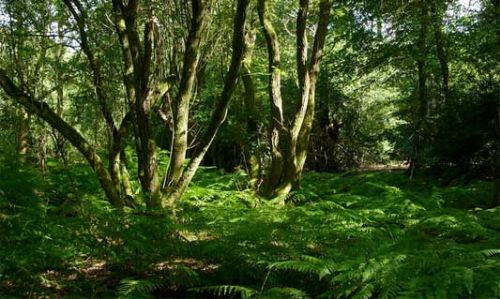
Two British experts made key contributions to important new international guidance for people involved in efforts to protect trees, woods and forests from pests and diseases.
The ’Guide to implementation of phytosanitary standards in forestry’ has just been published by the United Nations Food & Agriculture Organization (FAO). It sets out information about internationally recommended standards for measures to maintain the health of trees and to minimise the risk to them from pests and diseases.
Two key contributors were Professor Hugh Evans, the head of Forest Research in Wales, who is an internationally recognised expert on tree pests and diseases, and Roddie Burgess, who was head of the Forestry Commission’s Plant Health Service for 14 years until retiring in March 2011.
The booklet identifies the growth in international trade, which provides numerous pathways for accidentally spreading plant pests and pathogens around the world, as an important contributor to the increasing threats to trees and forests. It outlines a range of measures encompassing import controls, forest management practices and biosecurity precautions that can be taken to minimise the threats without imposing burdensome restrictions on trade.
It includes explanations of a wide range of good practices that can be employed by people managing or working in tree nurseries, or who manage, plant or harvest trees, or manufacture, sell or transport forest products. It is also designed to benefit forestry policy-makers, planners, managers and educators.
Included are a number of case examples of pests and pathogens that have moved across international boundaries to cause significant damage to forests in new countries. These include the pathogens that cause the Dutch elm disease that has wiped out millions of Britain’s elms, and the ramorum disease that is currently killing larch trees here.
Dr John Morgan, head of the Forestry Commission’s Plant Health Service, recommended the Guide to anyone involved in British forestry, saying;
’Britain’s trees, woods and forests make an enormously important contribution to Britain’s prosperity, landscape, cultural and natural heritage, and our health and well-being.
’However, exotic tree pests and diseases have become a growing threat in recent years as the growth in global trade has created new opportunities for them to enter. In addition, climate change threatens to increase the problem by making Britain more hospitable for some of these pests that might otherwise not have survived.
’This guidance is therefore valuable and timely because it complements our new, interim Tree Health Strategy, and is published during International Year of Forests, when there is a global focus on protecting the world’s forests. The guide is concise and written in plain English, making it very readable and accessible to everyone in the forestry community.
’We can help a lot to keep tree pests and diseases out of Britain, and to minimise the impact of those that are here to stay, by adopting these standards and good practices.’
